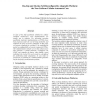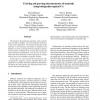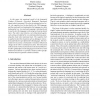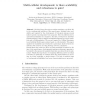10 search results - page 2 / 2 » Evolving Cellular Automata for Self-Testing Hardware |
EH
2002
IEEE
13 years 10 months ago
2002
IEEE
Fluid flow in porous media is a dynamic process that is traditionally modeled using PDE (Partial Differential Equations). In this approach, physical properties related to fluid fl...
IPPS
2006
IEEE
13 years 11 months ago
2006
IEEE
In spite of the high parallelism exhibited by cellular automata architectures, most implementations are usually run in software. For increasing execution parallelism, hardware imp...
EH
2004
IEEE
13 years 9 months ago
2004
IEEE
The properties of engineering structures, such as robotic arms, aircrafts or bridges, rely on the properties of the materials used to build them. The internal architecture of the ...
ISMVL
2007
IEEE
13 years 11 months ago
2007
IEEE
In this paper the emotional model of the humanoid Cynthea (Cybernetic Networked Humanoid Emotional Agent) robot is presented. The robot is explained at two levels: the cognitive l...
PPSN
2004
Springer
13 years 10 months ago
2004
Springer
Evolving large phenotypes remains nowadays a problem due to the combinatorial explosion of the search space. Seeking better scalability and inspired by the development of biologica...




